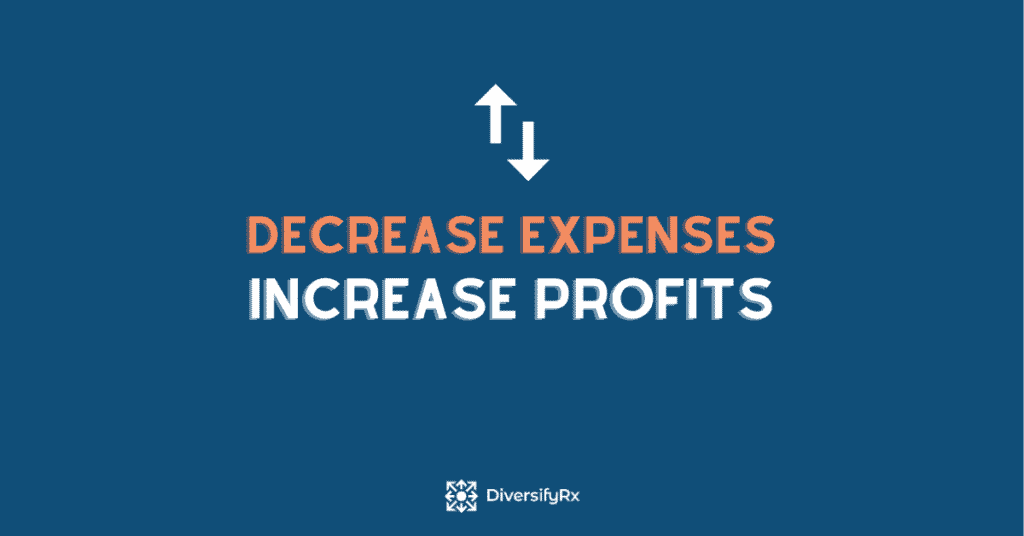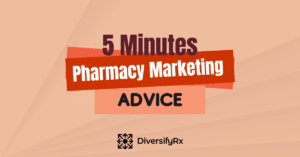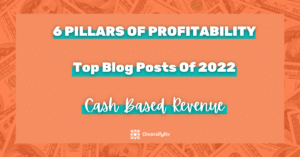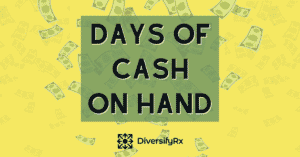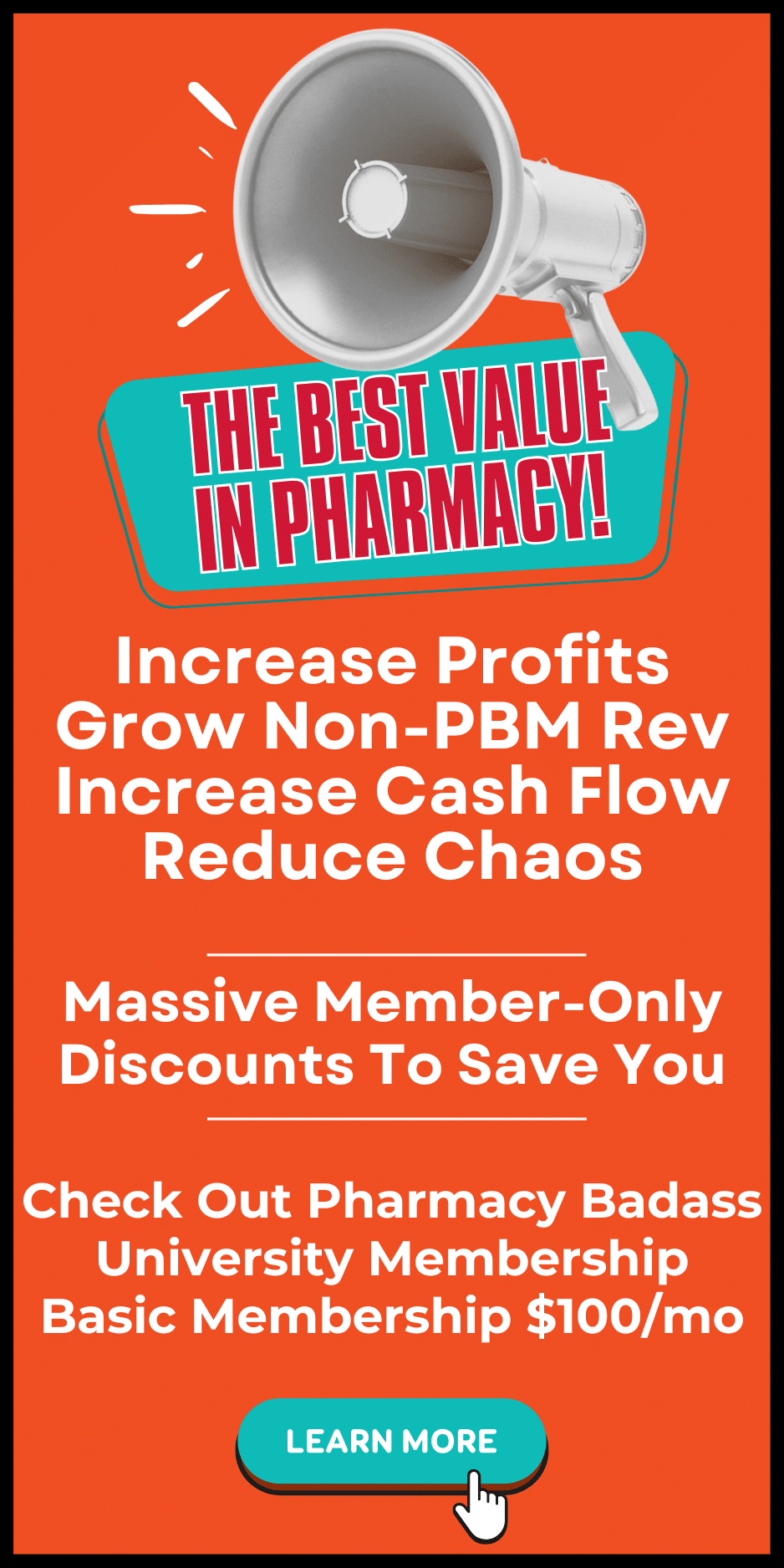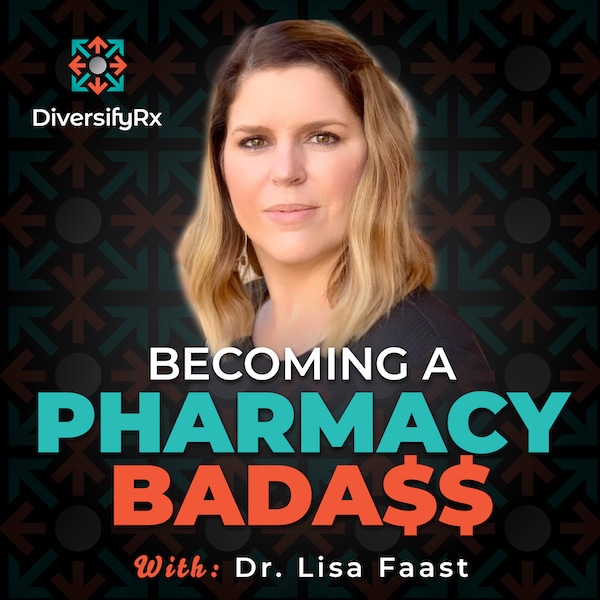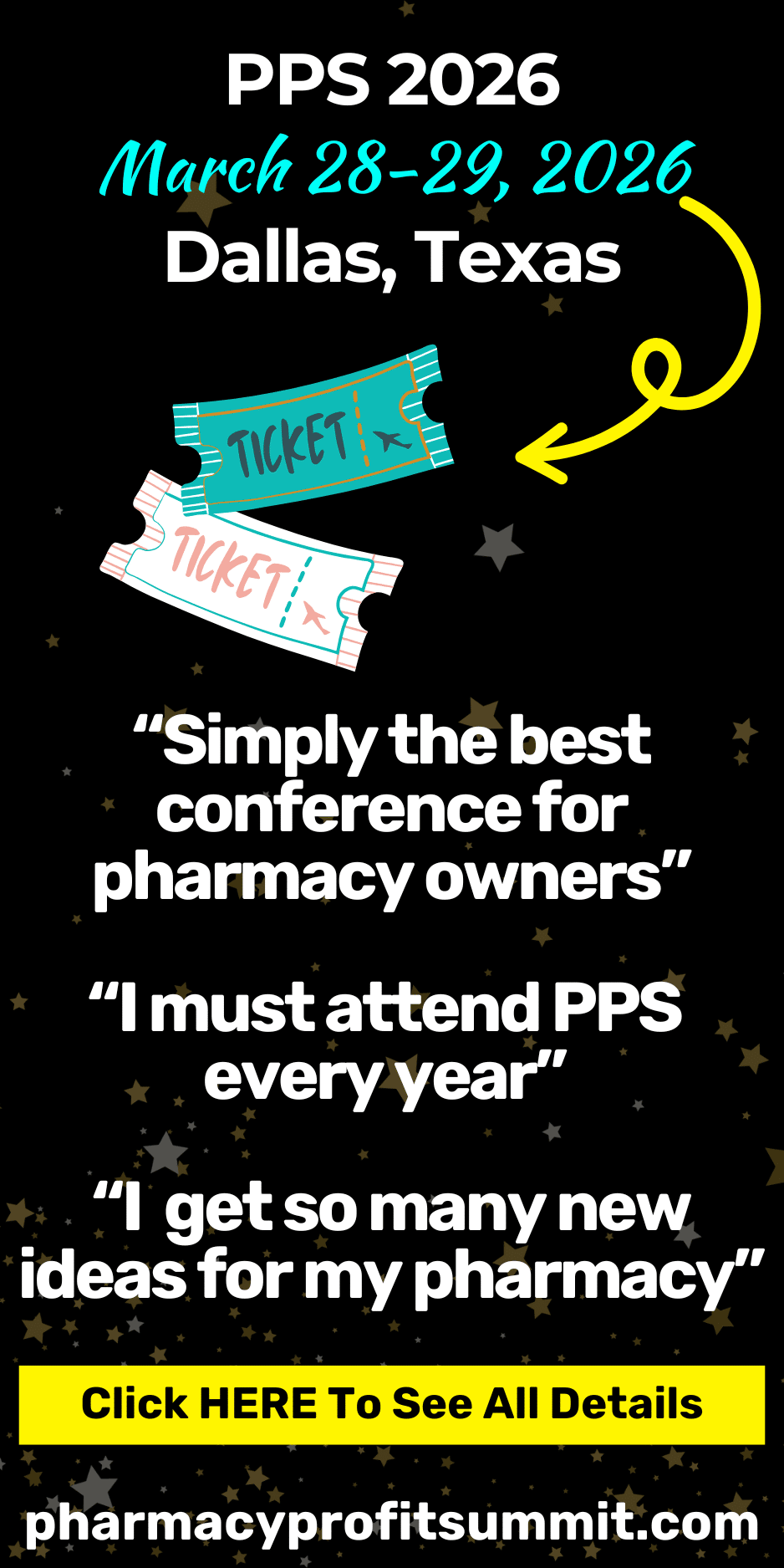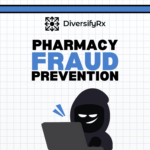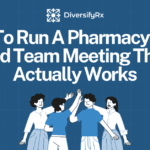A dollar saved is a dollar in your wallet. The fast track to increase pharmacy profits is by reducing your pharmacy’s expenses.
Many pharmacy owners are addicted to revenue. We like quoting to others how big our top line has become. Unfortunately, high revenue does not mean large pharmacy profits. In fact, for every $1 you increase your revenue, you only increase your bottom line by about $0.05. This calculation assumes your net profit percentage is at 5% (which is higher than average). Instead, for every $1 you save in expenses, your profit increases by $1. I like that ratio much better.
To have a successful, thriving pharmacy, you must optimize both your revenues and expenses. I know it is not as exciting or sexy to talk about reducing your costs. Ensure you are not stepping over dollars to pick up pennies. Let’s get started on maximizing your pharmacy profits and see how we can reduce your expenses.
Employees
Your employees have a more significant impact on your pharmacy profits than you may think. We all understand the hard costs of employees: payroll, insurance, taxes, and so on. It is exceptionally critical to control your hard costs. This ratio is one of our top KPIs you should be tracking. Your total payroll expenses should not exceed 13% of your revenues. High-performing pharmacy owners keep their payroll costs to less than 11% of revenues. If you are over this benchmark, you need to reduce your payroll or increase your revenues quickly. Second, only to your COGS, payroll has the most significant impact on cash flow and profitability.
Health Insurance Costs
First, let’s look at one of the hard costs of employees: health insurance. To attract top-quality employees, you must have an attractive benefits package. Your benefits might include paid time off, working hours, paid CEs, and health insurance. Most pharmacy owners get their insurance through traditional brokers. You are essentially giving money to your arch nemesis (the PBMs). Instead, I encourage you to check out ECCHIC as an alternative to the traditional insurance model. This way, you can attract and keep the best-performing employees without breaking the bank.
Profit-Minded Decisions
Let’s look beyond the hard costs. Thousands of decisions are made in your pharmacy every day. Unless you’re a one-person show, you do not make most of these decisions. Your employees do. If your staff isn’t profit-minded, then they may not be making the best choices. You may be wondering what types of actions are having such a large impact on your profitability. It can be as simple as using a paperclip or staple ($0.02 versus $0.0016). Or something more extensive, such as making an extra delivery to Mrs. Smith for the third time this week. The culmination of thousands of tiny choices every day adds up to tens of thousands of dollars to your bottom line. Take the time to train your staff on the basics of profitability, or you can use a company like Oval Group to do it for you.
Operational Costs
If you think back to your economics class, your teacher mentioned operational and fixed costs. You incur operating costs when you run your business. Some examples are vials, labels, or electricity. Fixed costs happen whether you are performing business or not. Think of rent or liability insurance. Many pharmacy owners overlook savings on operational expenses because they look marginal at best. A difference of a few dollars on a box of vials hardly seems worth it. That is a myth. You must optimize every expense as it can have a profound impact on your pharmacy.
Have you heard of the Kaizen effect or the daily 1% improvement effect? This principle illustrates that if you improve just 1% every day, you will end up 37 times better after a year than where you started. That’s not 37% better; that is 3700% better. Every penny matters when our margins are being dwindled by DIR fees and clawbacks every day. You can learn more about this principle in James Clear’s book Atomic Habits.
How can you improve your pharmacy by 1% every day? Here are a few options for decreasing your expenses to increase pharmacy profits.
Ink and Toner
Is there anything more critical to a pharmacy and yet so utterly dull at the same time? Most pharmacies overlook ink and toner costs. DiversifyRx has partnered with PSA (Provider Services of America) to provide high-quality, low-cost ink and toner to pharmacies. They guarantee the output of each of their products and will gladly exchange if needed. After years of using them, I have exchanged only one yellow toner cartridge. Get your no-obligation quote by filling out this form HERE.
Graphic Design
You can’t afford to not market your pharmacy, and yet you can’t afford to have everything you create professionally curated. Canva is your solution. Canva is a drag-and-drop, Word-like graphics software that is incredibly easy to use. It takes ZERO skills to use. They have thousands of templates, thousands of photos, and everything you need to create great-looking marketing materials. Best part? It is FREE. Yep, free. Now, you can upgrade and unlock amazing features. The entire cost is only $120 a YEAR! Create your FREE account HERE.
Pharmacy Badass University Members, don’t forget you get unlimited graphic designs as an Essentials or Unlimited member.
Payroll Processing
HR stuff is a headache, I know. You don’t want to overpay for some filing and processing of payroll. The majority of the work that any payroll company does is automated. Ensure you don’t pay a premium price. I highly recommend Gusto. It is easy to use and is somewhere between DIY and done-for-you. They take care of all the heavy lifting, but there is a bit more effort to get started with Gusto than some other common payroll companies. However, the savings are worth it! You don’t have to wait until the end of the year or quarter to switch and start saving. Get started with Gusto and enjoy more profits by clicking HERE.
Measuring Your Success
Ultimately, you want to increase pharmacy profits, so you want to track that number. You should also be monitoring your expense ratio. This number is taking all your expenses, doesn’t matter the type, and dividing them by your total revenue. This ratio tells the percentage of income that went towards costs. Ideally, you want it to be below 19%. In my Texas pharmacy, we operate at 15%, with payroll taking up more than half at 9%. For this pharmacy, that is a little fat, and we are going through a mid-year reevaluation of all expenses.
If you need a little help evaluating how your pharmacy is performing, please reach out to DiversifyRx. We can help with a KPI analysis and specific recommendations for improvement that will pay for themselves many times. Book a call here.



